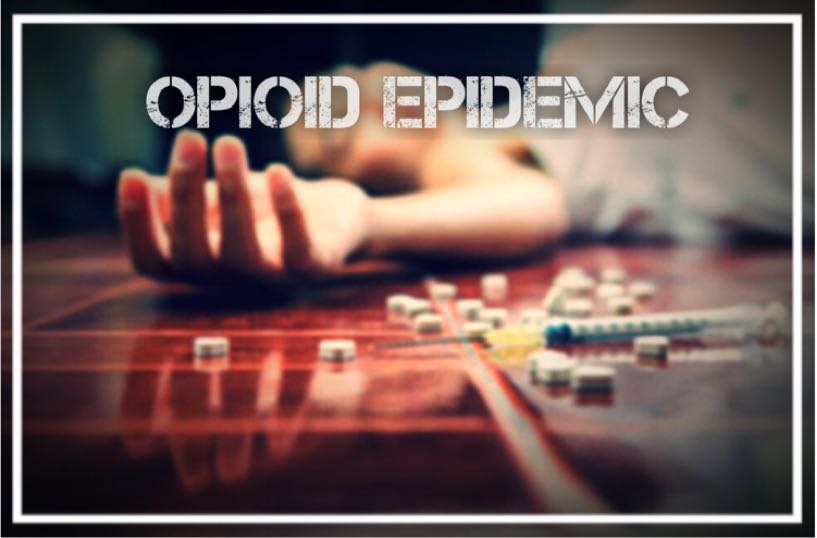
Category : Articles
Sub Category : World
On October 2, 2017, America suffered a shocking and emotional loss. At the age of 66, singer/songwriter, Tom Petty, was found unconscious at his home, not breathing and in full cardiac arrest. He was taken to the UCLA Medical Center in Santa Monica, California where he passed away at 8:40 pm PDT.
However, it wasn't until the next year on January 19, when Los Angeles County Department of Medical Examiner-Coroner announced he had died from an accidental overdose. What they found was shocking: large amounts of opioids, such as Fentanyl, Oxycodone, Acetylfentanyl, and Depropionyl Fentanyl. Those, as well as two benzodiazepines, and an antidepressant.
From personal experience, I know that mixing opioids with benzodiazepines can be a deadly mixture.
Fans were heartbroken to hear such news. After he had been playing from 1978-2017 being a multi-instrumentalist—vocals, guitar, piano, bass, and harmonica. Tom as a solo artist and with his band, The Heartbreakers, has sold over 80 million records worldwide, and in 2002, had been inducted in the Rock and Roll Hall of Fame.
Tom Petty’s death had been a tragedy, but only a few months earlier, America had lost another important singer/songwriter…
On April 21, 2016, at his home in Chanhassen, Minnesota, it was announced that pop-sensation, Prince Rogers Nelson, a.k.a. Prince, had passed away. The cause of death being another accidental Fentanyl overdose.
The streets rained purple for weeks after his death.
Before his death, his friends and loved ones knew something was wrong when he had postponed two shows, but he came out announcing that he had influenza. This, sadly, was not the case. He was 57-years old.
A singer, songwriter, musician, record producer, and filmmaker, who played guitar, vocals, keyboards, bass, piano, and drums was not all he had been known for. But for his eclectic work, flamboyant stage presence, extravagant fashion sense, use of make-up, and wide-vocal range.
Having dozens of hits, he sold over 100 million records, 8 Grammy Awards, 6 American Music Awards, a Golden Globe, an Academy Award for 1984’s Purple Rain, and was inducted in the Rock and Roll Hall of Fame in 2004—two years after Tom Petty.
The awards and Rock and Roll Hall of Fame were not the only things Tom and Prince had shared. They were both victims to the synthetic opioid, known as Fentanyl.
In 2016, the same year Prince had passed away, America experienced the biggest annual jump in opioid-related deaths ever recorded in the United States from 53,000 in 2015 to 64,000 deaths. A reason behind such a jump in deaths could be from the sudden increase in the sale of Fentanyl, a fatally strong opioid used in pain medication. In 2016, 3,500 lbs. were used in healthcare globally and by 2017, Fentanyl was the most widely used synthetic opioid in medicine.
The artists we lost had only been taking what they had been prescribed by their doctors.
Many addicts had started out solely taking what their doctors had prescribed them. Many began abusing them while others had been hooked unknowingly. Without being able to pay for their expensive painkillers, many people made the switch to something a lot of more cheaper and convenient, heroin.
Now, these people are scarred for life with the stigma of being heroin addicts. Some attempt to get help by attending 30-day rehab facilities and think that is enough, until they go right back out and relapse a day or two out of treatment. What they didn't know was most 30-day treatment centers only have a 5-10% success rate. They also don't attend aftercare or even think about sober Living, which are both crucial in recovering from opiate addiction.
After each time in treatment, I had stayed in a halfway house, also known as sober living. This is an imperative step in recovering when it comes to the opioid/heroin addict. Unless he/she goes to a 90-day inpatient treatment facility, a sober living environment would be the next step after a normal 30-day center.
The thirty-day treatment stay is not enough time for the body and mind of an opioid/heroin addict to fully recover. When the addict leaves the thirty-day rehab, they are living in the most dangerous time for them. This is when most addicts relapse, going back to shooting dope, and many of them doing too much, then pass away from an overdose. The deceased addict becomes another mere statistic for the books.
What works is an inpatient rehab, with a sober living environment after , while also attending aftercare. The further away from where they used to use, the better. Anything can remind them of using which can send them straight to a relapse. The most effective way is being properly medicated with counseling.

